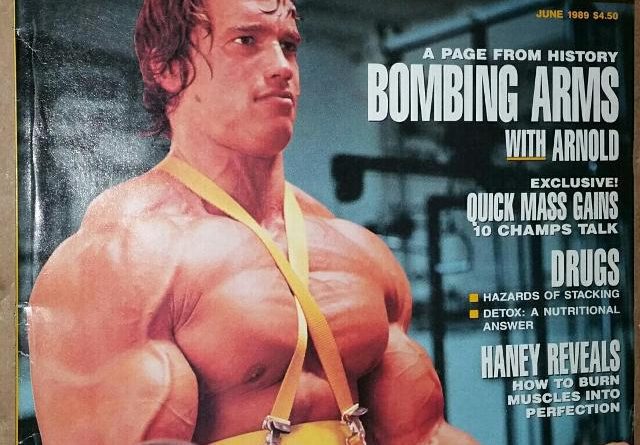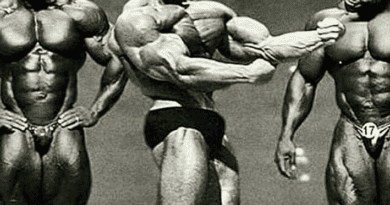Why Bodybuilding Print Magazines Are Dead
I remember the excitement of waiting for my monthly bodybuilding print magazines. It felt like Christmas morning, tearing into the latest issues of Men’s Health, FLEX, Muscular Development, and Muscle & Fitness.
As a certified strength and conditioning coach and sports nutritionist, those magazines were my connection to the industry’s pulse. I spent every free moment absorbing the content. Then, almost overnight, they vanished. That entire era is over, and it’s clear that bodybuilding print magazines are dead.
The few that remain feel more like ad brochures than the content-rich resources they once were. Let’s break down the reasons for this massive shift and why the glory days of print are never coming back.
Key Takeaways
- The primary distribution channels for magazines, like major bookstores, have largely disappeared, cutting off access for casual buyers.
- Modern media consumption habits favor short, digital content on platforms like YouTube and Instagram over long-form print articles.
- Advertisers have shifted their budgets from print to digital, where they can achieve better targeting, tracking, and return on investment.
- The rise of authentic fitness influencers and high-quality free online content has made paid print subscriptions less appealing.
- Legacy magazines like FLEX and Muscular Development have ceased their print editions, officially signaling the end of an era for the industry.

Reasons Why Bodybuilding Print Magazines are Dead Today
Here are the core reasons I’ve seen firsthand for why bodybuilding print magazines are dead and why there’s no turning back.
1. Fish where the fish are
You can’t sell a product if the store that carries it no longer exists. A huge reason print magazines are dead is because bookstores are dead. Years ago, you could find them in every mall and shopping center.
Then, giants like Borders started disappearing, ultimately filing for Chapter 11 bankruptcy in 2011 and liquidating all its stores. This collapse removed a primary point of sale, making it much harder for people to casually pick up a magazine. Today, consumers are shopping online through giants like Amazon.
With fewer people purchasing books and physical media, the entire distribution chain crumbled. Print media companies couldn’t generate enough revenue to cover the high costs of printing and distribution, forcing them to either shut down or pivot to digital-only models that never gained the same traction.
2. Not enough time to sit and read cover to cover
Life has gotten faster, and our media consumption habits have adapted. In my experience, very few people have the dedicated time to sit down and read a magazine from front to back. We work long hours, squeeze in workouts, and prioritize family time.
This isn’t just a feeling; it’s backed by data. A 2025 report from the Pew Research Center found that only 7% of U.S. adults often get news from print publications, while a massive 86% get news from digital devices. Our attention has shifted from the coffee table to the screen in our pocket.
The slow, deliberate experience of a monthly magazine can’t compete with the instant gratification of a constantly updated social media feed or a quick YouTube tutorial you can watch between sets.
Even local newspapers have largely gone digital for the same reason. The leisurely pace of print simply doesn’t fit into the “micro-moments” that define our busy schedules. That’s why I always stress to my clients to be productive with their time.
3. Everything is online
Welcome to the digital age. We’ve replaced our bookshelves and CD racks with smartphones and tablets. This isn’t a failure of the magazines themselves; it’s a fundamental shift in technology and consumer behavior. You either evolve or you become obsolete.
The transition was swift and decisive. Iconic publications that were once staples for every bodybuilder have ceased printing entirely.
- FLEX Magazine: A pillar of hardcore bodybuilding, it published its final print issue in May 2018 before merging with Muscle & Fitness online.
- Muscular Development: After 59 years, this industry giant announced in late 2023 that it would no longer produce print editions, a move many saw as the official end of the magazine era.
Information is now instant. Why wait two months for Olympia results in a magazine when you can watch a “show day” vlog from an athlete’s YouTube channel within hours? Digital platforms offer an immediacy and authenticity that print could never match.
4. Free versus subscription
Why would you pay for information you can now get for free? That’s the simple economic question that doomed the subscription model. A quick search on Google or YouTube can provide answers to almost any training or nutrition question.

You can now access incredibly high-quality, science-based content from experts and influencers at no cost. Creators on platforms like YouTube provide deep-dive videos on everything from hypertrophy to contest prep, offering more value than a typical magazine article.
Let’s be honest, not every page of a magazine was valuable. You’d often skip boring interviews or articles that didn’t apply to you. With online content, you choose exactly what you want to consume. This shift to on-demand, free information made paying for a monthly subscription feel unnecessary for most people.
5. Advertisers don’t value print magazines anymore
A business can’t survive without revenue, and for magazines, that meant advertising dollars. The problem is that advertisers follow the audience, and the audience went online. This created a downward spiral: as readership declined, so did ad revenue, forcing magazines to shrink in size and quality, which in turn drove more readers away.
The numbers behind this shift are staggering. Global digital ad spending is projected to surpass $700 billion by 2025, accounting for over 65% of all ad spending. Meanwhile, print ad revenue for consumer magazines is in a steep decline.
Digital advertising platforms like Google Ads and Meta offer something print never could: trackable results. An advertiser can see exactly how many people clicked their ad and made a purchase. A magazine ad’s impact was mostly guesswork. Given the choice between measurable ROI and hopeful branding, businesses overwhelmingly chose digital.
6. No one cares about today’s bodybuilders
This might sound harsh, but the dynamic between fans and athletes has completely changed. The era of larger-than-life rivalries, like Arnold Schwarzenegger vs. Lou Ferrigno, was heavily manufactured and promoted by the magazines to sell copies. Today’s athletes control their own narratives through social media.
Modern bodybuilders are often more focused on building a polished, sponsor-friendly brand online than engaging in public rivalries. This is a smart business move for them, but it removes the drama that magazines thrived on.

The new kings of the sport are “fitness influencers” who combine elite physiques with massive online personalities. Five-time Classic Physique Olympia champion Chris Bumstead, for example, has over 25 million Instagram followers and millions of YouTube subscribers. His audience is vastly larger than the circulation of any print magazine at its peak. Fans connect with his personality and behind-the-scenes content, not just his contest results.
7. You really can’t say much about bodybuilding in a magazine
The content model for bodybuilding print magazines became outdated and lost credibility. For decades, many magazines were owned by or heavily tied to supplement companies, a classic example being Joe Weider’s publications and the Weider Nutrition brand.
This created a huge conflict of interest. Readers grew skeptical of workout articles and supplement endorsements, knowing the featured athlete was likely being paid to promote a product. The idea that a specific protein powder was the secret to a Mr. Olympia physique lost its power.
Online creators, through long-form vlogs and science-based breakdowns, now offer a level of depth and perceived authenticity that a glossy, ad-filled magazine can’t replicate. The audience is smarter and more demanding, and they’ve moved to platforms that respect their intelligence. The old model of pushing products next to workout routines simply couldn’t survive that shift.
FAQs
Are any bodybuilding magazines still in print?
Very few major bodybuilding-specific magazines remain in print in the United States. Publications like Muscular Development and FLEX have ceased their print editions. Some general fitness magazines like Men’s Health still print, but the era of dedicated, widely circulated bodybuilding print magazines is effectively over.
What replaced bodybuilding magazines?
Bodybuilding magazines were replaced by a diverse ecosystem of digital media. This includes websites, online forums, and social media platforms. The most dominant replacements are YouTube channels and Instagram profiles run by fitness influencers, coaches, and professional athletes who provide instant access to workouts, nutrition advice, and contest coverage.
Why did supplement companies stop advertising in magazines?
Supplement companies stopped advertising heavily in magazines because their customers moved online. Digital advertising offers superior targeting, allowing brands to reach specific demographics with precision. More importantly, it provides measurable data and a clearer return on investment (ROI) compared to the high cost and uncertain reach of print ads.
Is digital media better than print magazines for fitness?
Digital media offers several advantages, including immediate access to information, a wider variety of content (from scientific breakdowns to vlogs), and the ability to interact directly with creators. While print offered a curated, high-quality visual experience, digital media provides a more dynamic, authentic, and user-driven platform for fitness information.


*Disclosure: This article may contain affiliate links or ads, which means we earn a small commission at no extra cost to you if you make a purchase through these links. These commissions help support the operation and maintenance of our website, allowing us to continue producing free valuable content. Your support is genuinely appreciated, whether you choose to use our links or not. Thank you for being a part of our community and enjoying our content.
PLEASE CONSIDER SHARING THIS ON YOUR SOCIAL MEDIA TO HELP OTHERS LEARN MORE ABOUT THIS TOPIC.





